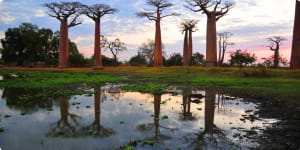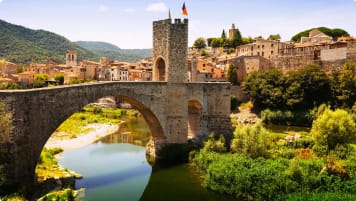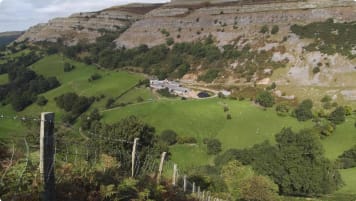Madagascar Small Group Tour | The island of Lemurs & Avenue of Baobabs
On this small group tour we explore the country’s natural wonders as well as its colonial past. Madagascar has a range of extraordinary plant and animal life which we will have the chance to view in the island’s National Parks and Nature Reserves. While on the tour we will also learn about both the Portuguese and French periods of control.
From £7,425GBP
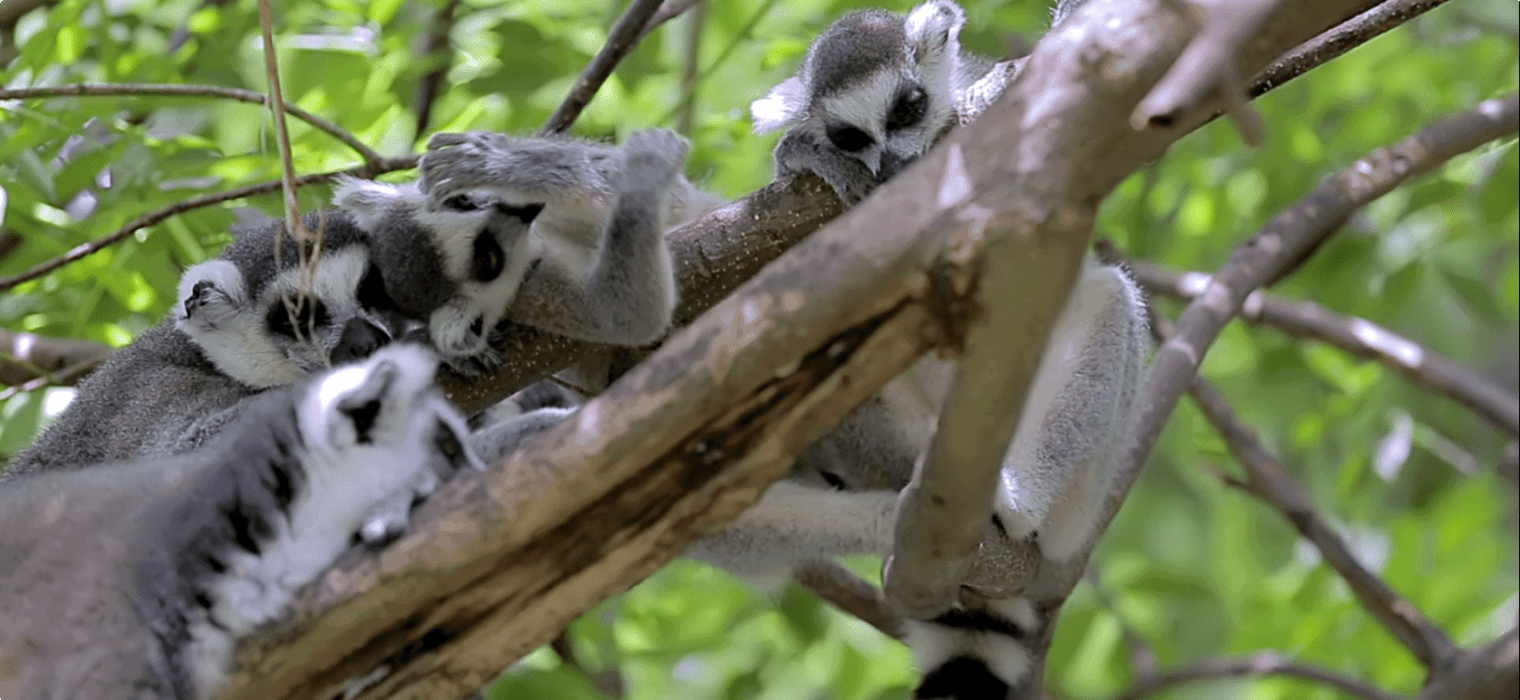
Highlights
- 1. A night-walk in Andasibe-Mantadia National Park provides the opportunity to see nocturnal species such as woolly lemurs and chameleons.
- 2. Visit the tombs of the Mahafaly and Masikoro people, decorated with wooden sculptures and zebu horns.
- 3. Visit the beautiful Berenty Reserve, home to six species of lemur.
- 4. Learn about the Spice Trade while visiting the place where the Portuguese claimed Madagascar.
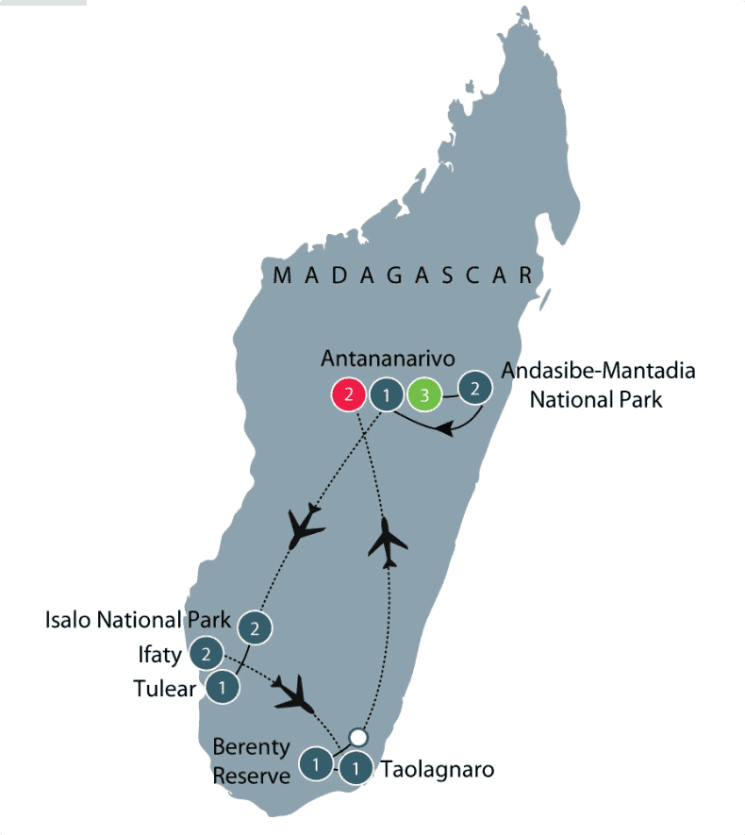
Departure Dates
| Departure Date | Price |
|---|---|
| 19 April 2025 Ends 04 May 2025 • 16 days £7,788 Twin £8,983 Single Available | Selected |
| 13 September 2025 Ends 28 September 2025 • 16 days £7,788 Twin £8,983 Single Pre-guaranteed | |
| 18 April 2026 Ends 03 May 2026 • 16 days £7,788 Twin £8,983 Single Available | |
| 02 September 2026 Ends 17 September 2026 • 16 days £7,788 Twin £8,983 Single Available |
Madagascar Small Group Tour: Explore the island of cultural and ecological diversity
This tour is popular to do in conjunction to our West Africa tour.
Our Madagascar small group tour allows the curious traveller to experience the full breadth of the island's cultural and ecological diversity. Madagascar is a dream destination for anyone interested in exploring wildlife and epic landscapes.
This tour is a great way to discover the country's natural wonders, its people and its Portuguese and then French colonial past. We begin in Madagascar's capital Antananarivo (Tana, for short) before setting out to explore exceptional nature reserves with unique wildlife and extraordinary biodiversity. During our journey, we discover the local and colonial history, which includes the island's role in the Spice Wars.
This tour is designed to suit the active senior traveller interested in the history and ecology of this island nation.
Tour Highlights:
- Experience a night walk in search of nocturnal species in the Mantadia National Park.
- Visit the Oceanographic Museum run by the University of Tulear, which includes a specimen of coelacanth measuring nearly five feet in length.
- In the Berenty reserve get up close and personal with lemurs. The six species seen in the reserve include three species active during the day. These are the ringtail lemurs, brown lemurs, and Verreaux's sifakas.
- At the Reniala Nature Reserve learn about the local ecology, unusual bird species and extraordinary plants. This includes a baobab tree believed to be 1,200 years old, due to its girth of more than 30 feet.
You can check our country profile on Madagascar to learn more. For further information about this tour, check out the ‘Top 5’ or ‘Itinerary’ pages above. To make a booking, please call, send us an email, or simply fill in the form on the right hand side of this page.
We offer other tours in the region, for example a 19-day Southern African and a 10-day Namibia Tour. Odyssey also has a wealth of information to assist you with planning for your trip. From appropriate clothing and footwear, to packing suggestions, there is no shortage of travel tips on our website.
Gallery
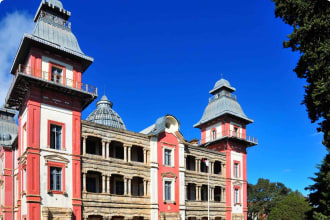

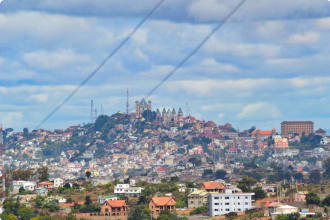
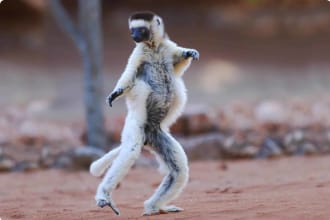
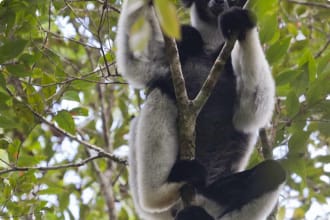
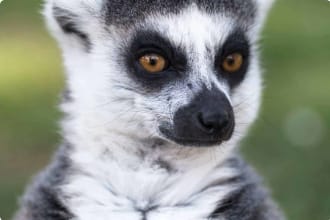
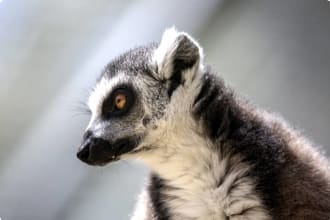
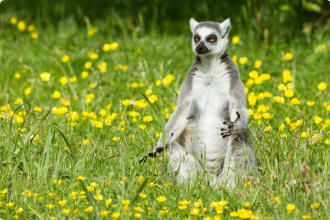
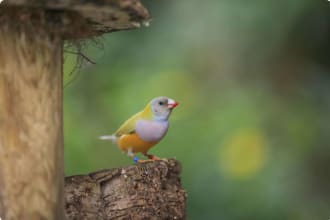
Itinerary
16 days
Day 1: Antananarivo
Accommodation: Palissandre Hotel or equivalent
Today, we arrive in the Madagascar capital of Antananarivo. After a check-in and orientation, the group comes together for a welcome dinner.
(D)
Day 2: Antananarivo
Accommodation: Palissandre Hotel or equivalent
In the morning, we attend a lecture that serves as an introduction to Madagascar, and then take a three hour walking tour of the magnificent capital, Antananarivo.
In the afternoon, we depart via coach and drive approximately 1 hour outside of the city to visit the Royal Hill of Ambohimanga. At this UNESCO World Heritage site, the tour is introduced to an important part of Madagascar’s history, learning about the rise and fall of the royal dynasty that was influential in Madagascar becoming a modern state.
We also visit the fortified royal palace, viewing the spiritual sites, living quarters, and royal burial tombs on the hilltop.
Please note that there are steep steps with a handrail that one must climb between the parking area and Ambohimanga palace. The grounds around Ambohimanga are uneven with tree roots, boulders and uneven cobblestones exposed in places, so one must pay attention when walking. Within the palace grounds, there are steps required to visit certain parts of the palace, but these can be avoided if desired.
Day 3: Antananarivo
Accommodation: Palissandre Hotel or equivalent
This morning, we visit the Tsimbazaza educational centre and museum for an overview of Madagascar’s flora and fauna.
The museum contains specimens of Madagascar’s unique wildlife, including numerous lemur and bird species, as well as a skeleton of the extinct giant elephant bird. The museum also houses an ethnographic display that introduces the Malagasy culture through jewellery, photographs and tools used in everyday life.
The afternoon is free to continue exploring Antananarivo at your leisure.
Day 4: Andasibe-Mantadia National Park
Accommodation: Vakona Forest Lodge
After breakfast at the hotel, we travel in 4-wheel drive vehicles from Tana to Andasibe-Mantadia National Park, on the eastern side of the island. The driving time between Tana and Andasibe-Mantadia National Park is approximately 4.5 hours.
En route, we stop at Peyreras Reserve. This small reserve is home to numerous species of chameleons, insects endemic to the region, as well as several species of snakes and amphibians, giving us a perfect opportunity us to see this wildlife up close.
We also stop for a two-course lunch at Feon’ny ala Lodge before continuing with the final portion of our journey to Andasibe-Mantadia National Park. When we arrive, we enjoy an overview lecture on Madagascan biodiversity and history.
In the evening, we have a two-course set menu dinner at the lodge.
(B,L,D)
Day 5: Andasibe-Mantadia National Park
Accommodation: Vakona Forest Lodge
This morning, we travel in 4-wheel drive vehicles up to the high-altitude rain-forest in Mantadia National Park. Here, we enjoy a hike led by local park rangers. We traverse the trails in the park while keeping an eye out for the diadem-ed sifaka and the black-and-white ruffed lemur; we may end up hiking off the maintained trails into the brush in order to get a better view of the lemurs.
We enjoy a picnic lunch in the park before returning to the lodge.
Please note that the drive from the lodge to the Mantadia trail head takes approximately 1.5 hours over very bumpy road. Hiking time and distances vary depending on where the wildlife is at the time; trails can be steep in areas with places of mud or sand.
In the late afternoon, we regroup with the Group Leader for a lecture on the natural history and biodiversity of Madagascar.
As the sun sets, we drive a short distance for a night walk in search of nocturnal species. The walk is done along the paved road, and is completely flat. Highlights of the walk may include spotting the woolly lemur, Goodman’s mouse lemur, and various tree frog and chameleon species.
In the evening, we enjoy dinner at the lodge.
(B,L,D)
Day 6: Antananarivo
Accommodation: Palissandre Hotel or equivalent
This morning, we depart for the Analamazaotra Reserve, part of Andasibe-Mantadia National Park.
The reserve is home to a variety of wildlife that is found nowhere else in the world. Nine species of lemur live within the reserve, including the indri. Critically endangered, the indri is the world’s largest lemur standing at three feet high. The indri lives in a small family of up to five individuals, including a mate for life. In addition to lemurs, keep an eye out for one of the world’s largest chameleons, the Parson’s chameleon, which grows up to two feet long and is bright green.
Following lunch at the lodge, we visit a nearby private reserve for an opportunity to see several species of lemurs up close. Some of the species you’ll see include the eastern grey bamboo lemur, white-ruffed and common brown lemurs. From the reserve, we will be driven back to Tana for an overnight stay.
Please note that hiking time and distances vary depending on where the wildlife is at the time; trails can be steep in places with areas of mud or sand. The flat parts of the trail are often on cobblestones, which can be slick if it has rained. The drive from Andasibe-Mantadia to Tana takes approximately 4.5 hours, depending on weather conditions.
(B,L,D)
Day 7: Isalo National Park
Accommodation: Relais de la Reine or similar
After a buffet breakfast at the hotel, we take a private plane transfer from Tana to a local airstrip near Isalo National Park. The charter flight takes approximately 2 hours. On arrival, we enjoy a picnic lunch at the lodge in Isalo.
We then have the opportunity to relax before a sunset short drive to the Isalo Interpretation Centre, which hosts information and displays on how the park was formed, the people who live around the park and the wildlife found in the national park.
In the evening, we enjoy a two-course dinner at the lodge.
(B,L,D)
Day 8: Isalo National Park
Accommodation: Relais de la Reine
This morning, we take the short drive to the park entrance, where we visit a local public school and have a chance to meet some of the students and teachers (when school is in session). From there we go to Isalo National Park to the Namaza Canyon trail head. In the company of a local park ranger, our walk takes us into the canyon along a dry and largely unshaded trail to a campground where lemurs are frequently spotted. In the canyon, we will find Madagascar’s most iconic lemur – the Ring-tailed lemur – as well as the red-fronted lemur.
Please note that Namaza Canyon is a gentle hike of about 30-45 minutes one-way, with a round-trip mileage of around 1.5 kms to the campground, where lemurs are commonly spotted. Participants can choose to walk farther up the trail to a waterfall, but the trail climbs steeply after the campground. The total round-trip to the waterfall is 4 kms
After a picnic lunch, we enjoy a free afternoon to enjoy the Lodge and its surrounds.
Tonight we enjoy a two-course dinner at the Lodge.
Day 9: Tulear
Accommodation: Moringa Hotel or equivalent
In the morning, we board a coach to begin the drive to Tulear. Along the way, we visit the tombs of the Mahafaly and Masikoro people, which represent the area’s local ethnic groups that live in the area.
The Mahafaly commonly bury their dead chiefs and kings in stone squares topped with wooden sculptures and zebu (a type of cow) horns. Large numbers of zebu horns and sculptures indicate that animportant occupant resides within the tomb. The Masikoro tombs tend to be very ornate, with one tomb even in the shape of a warship! About 90 minutes’ drive from Isalo, we stop at Zombitse National Park, which protects the dry deciduous forest and the abundance of biodiversity within that forest, for a walk with local experts.
Zombitse is an essential transition zone between the arid and more humid areas of Madagascar and also stands as a stark example of the deforestation problem on the island, being one of the few remnants of deciduous forest left. Here, we embark on an hour-long walk in search of the unique biodiversity in the area. Highlights include the Verreaux’s sifaka, Hubbard’s sportive lemur, and a variety of bird, butterfly, reptile and amphibian species.
A boxed lunch is provided for the journey.
In the afternoon, making our way to Tulear we’ll see baobabs on either side of the road; Madagascar boasts seven of the eight baobab species in the world, making this tree the island’s most iconic flora. Included in Madagascar’s flora is the unique thorny Didiereaceae, a small family of cactus-like plants found only in the arid southwest. Many of these species, along with numerous euphorbia and kalanchoe, are represented at the Arboretum d’Antsokay which we will visit in the company of a local expert just before reaching Tulear.
Please note that walk in Zombitse is approximately 2kms on a flat, sandy trail with plenty of shade. At the arboretum, the walk is on flat and even terrain, for no more than 1.6km Total drive time from Isalo to Tulear is approximately 4 hours.
In the evening, we enjoy a two-course meal at the hotel.
(B,L,D)
Day 10: Ifaty
Accommodation: Les Dunes d'Ifaty or equivalent
We start the morning with a visit to the Oceanographic Museum, run by the University of Tulear. The museum displays the variety of marine life present in the Mozambique Canal including corals, sponges, fish, tortoises, mollusks and a collection of shells. Of special interest is a specimen of coelacanth, measuring nearly five feet in length, which was captured near the fishing village of Anakao in 1995. Coelacanths were once only known through fossil records, the oldest of which dates back approximately 360 million years. They were thought to have become extinct some 65 million years ago in the time of the dinosaurs; that theory changed when the first living specimen of coelacanth was found in 1938. Now there are two known species of coelacanth, one that lives in the Western Indian Ocean waters, and another species found near Indonesia. From the museum, we will be driven in our motor coach north along the coast to the village of Ifaty, where we spend the next two nights.
The drive time from Tulear to Ifaty is approximately 1 hour.
After a picnic lunch, we visit a local Vezo fishing village to see how the locals live and work. We are likely to see examples of the traditional dug-out boats that are still made by hand today.
At the hotel, we enjoy a 2 course dinner.
(B,L,D)
Day 11: Ifaty
Accommodation: Les Dunes d'Ifaty
Today, an early morning start takes us to Reniala Nature Reserve, located just a short drive from the village of Ifaty, where we enjoy a morning ecology walk in the company of our Group Leader and a local expert. This small, private reserve protects the native spiny forest and is also a hot-spot for birding. Two species of endemic, threatened birds are found here: the long-tailed ground roller and sub desert mesite. Both species’ entire global range consists of a narrow band of coastline some 100 miles in length and extending only 30 miles inland. In addition to these two extremely rare birds, Reniala hosts numerous other bird species such as the sickle-billed vanga, Archbold’s newtonia, white-headed vanga and Madagascar harrier hawk. Among the various endemic spiny forest plants we will find the largest baobab in the Ifaty area, which is believed to be 1,200 years old with an impressive girth measuring more than 30 feet. Near Reniala is the Village des Tortues (Tortoise Village), where over 1,000 radiated and spider tortoises are protected
The walking trail in the nature reserve is flat and takes approximately 2 kms.
After lunch at the hotel, we the afternoon at leisure before coming together for a group dinner in the evening.
(B,L,D)
Day 12: Taolagnaro
Accommodation: TBA
Please note that Air Madagascar frequently changes their flight schedules, so timing and activities on this day must be flexible.
After breakfast at the hotel, we board the coach to Tulear for the first portion of our transfer to Taolagnaro. From the Tulear Airport, we will take an Air Madagascar flight to Taolagnaro Airport.
We enjoy lunch at a local restaurant and then, in the afternoon, discuss the Portuguese and the Spice Wars and then the French Colonialism on Taolagnaro, as we walk around the town and harbour.
The drive time from Ifaty to Tulear is 1 hour. Flight time from Tulear to Taolagnaro is approximately 90 minutes.
Dinner tonight is at a local restaurant.
(B,L,D)
Day 13: The Berenty Reserve
Accommodation: The Berenty Reserve
Today we travel out to Berenty reserve, a 1000-ha private reserve located 86 km west of Taolagnaro. It is one of the premier tourist destinations in Madagascar, having been protected for over forty years. It is home to six species of lemur, the south’s largest colony of fruit bats, and 103 bird species.
The reserve is world-famous for its lemurs, which have been studied and filmed extensively. The six varieties seen in the reserve include three species that are active during the day: ringtail lemurs, brown lemurs, and Verreaux’s sifakas. These animals are very habituated to people, so expect to have them running across your roof, invading the breakfast area, and strolling within feet of you as you roam around the reserve’s trails. Nocturnal lemurs include the white-footed sportive lemur, the gray mouse lemur, and the reddish-gray mouse lemur.
The reserve is also home to the south’s largest colony of fruit bats, also known as Madagascar flying foxes. These giant bats are found in group of trees, with restricted access, in order to protect the colony. 103 bird species can be found within the reserve, including owls and couas. The reserve protects a portion of Madagascar’s spiny forest, and is also home to more lush forests dominated by tamarind trees.
In the evening, we enjoy a two-course dinner.
Day 14: Antananarivo
Accommodation: Palissandre Hotel or equivalent
Today we fly from Taolagnaro to Antananarivo. Our departure and scheduling is subject to flights.
Day 15: Antananarivo
Accommodation: Palissandre Hotel or equivalent
Today, we explore the city of Antananarivo by coach, including the historic upper part of the city and downtown. In the upper part of Tana, we disembark from the vehicle to visit a few significant churches with the group leader and our local expert, and take in the view of the lower city from a scenic point. We also visit the Rova of Antananarivo, a royal palace complex with structures dating from varying historical periods. Later on, we visit the magnificent Andafiavaratra Palace.
Tonight we enjoy a farewell dinner with three courses.
Day 16: Antananarivo
After breakfast, we say our farewells and the tour draws to a close.
Includes / Excludes
What’s included in our Tour
- 15 breakfasts, 13 lunches, 14 dinners.
What’s not included in our Tour
- Comprehensive travel insurance.
- Items of a personal nature, such as telephone calls and laundry.
- Economy class international airfares and departure taxes.
- Meals not specified in the itinerary.
Participants must be in excellent health, extremely mobile and live an active lifestyle. Program activities may include up to 6 hours of continuous strenuous, moderate-to-fast paced activities per day on varied terrain.
Book now
Make it a private tour
Easing your journey
Crossing international borders with restrictions
The list of requirements to travel internationally has changed and will continue to change for several years. Odyssey is here to assist you in managing your way through these requirements:
For more information see our Crossing international borders with restrictions page.
Book With Confidence
If less than 30 days before your tour starts you are unable to travel as a result of Government travel restrictions, Odyssey Traveller will assist you with a date change, provide you with a credit or process a refund for your booking less any non-recoverable costs.
See Terms and conditions for details.
Peace of Mind Travel
The safety of our travellers, tour leader, local guide and support staff has always been our top priority and with the new guidelines for public health and safety for keeping safe for destinations around the world, we’ve developed our plan to give you peace of mind when travelling with us.
See Peace of Mind Travel for details.
Reading List Download PDF
A History of Madagascar
Mervyn Brown
Madagascar is the fourth largest island in the world. It is a unique blend of Asia and African culture. Although close to the East Coast of Africa, Madagascar came to be inhabited by sea-faring peoples from present day Indonesia. Although so close to the east coast of Africa where traces of human existence go back hundreds of thousands years, Madagascar was uninhabited until about two thousand years ago. How it came to be inhabited by sea-faring peoples from present day Indonesia is just one of the many fascinating aspects of this book. The History of Madagascar examines the origins of Malagasy, the early context with Europeans and the struggle for influence in the nineteenth century between the British and the French. It also covers the Colonial period from 1896 to 1960, the recovery of independence and subsequent history up to the early 1990's. A highly readable, entertaining introduction to the history, politics and people of Madagascar."
Wildlife of Madagascar
Ken Behrens & Keith Barnes
The Indian Ocean island of Madagascar is one of the world's great natural treasures and ecotourism destinations. Despite being an island, it is home to nearly an entire continent's variety of species, from the famous lemurs to a profusion of bizarre and beautiful birds, reptiles and amphibians. Wildlife of Madagascar is a compact and beautifully illustrated photographic guide, and an essential companion for any visitor or resident. With an eye-catching design, authoritative and accessible text and easy-to-use format, it provides information on identification, distribution, habitat, behaviour, biology and conservation for all the mammals, birds, reptiles, amphibians and butterflies likely to be seen. * The most comprehensive single-volume field guide to Madagascar's wildlife * Attractive layout features more than 900 stunning colour photographs * Covers the mammals, birds, reptiles, amphibians and butterflies, and some of the other invertebrates and plants, most likely to be seen * Provides key information about identification, distribution, habitat, behaviour and conservation * Introductory sections provide background information on Madagascar and its unique environments
Thank You, Madagascar: The Conservation Diaries of Alison Jolly
Alison Jolly & Hilary Bradt
Madagascar is one of the world’s natural jewels, with over ninety per cent of its wildlife found nowhere else on Earth. Few people knew it better than the pioneering primatologist and conservationist, Alison Jolly. Thank You, Madagascar is her eyewitness account of the extraordinary biodiversity of the island, and the environment of its people.
At the book’s heart is a conflict between three different views of nature. Is the extraordinary forest treasure-house of Madagascar a heritage for the entire world? Is it a legacy of the forest dwellers’ ancestors, bequeathed to serve the needs of their living descendants? Or is it an economic resource to be pillaged for short-term gain and to be preserved only to deliver benefits for those with political power?
Exploring and questioning these different views, this is a beautifully written diary and a tribute to Madagascar.
Extinct Madagascar: Picturing the Island's Past
Steven M. Goodman & William L. Jungers
The landscapes of Madagascar have long delighted zoologists, who have discovered, in and among the island’s baobab trees and thickets, a dizzying array of animals, including something approaching one hundred species of lemur. Madagascar’s mammal fauna, for example, is far more diverse, and more endemic, than early explorers and naturalists ever dreamed of. But in the past 2,500 or so years—a period associated with natural climatic shifts and ecological change, as well as partially coinciding with the arrival of the island’s first human settlers—a considerable proportion of Madagascar’s forests have disappeared; and in the wake of this loss, a number of species unique to Madagascar have vanished forever into extinction.
In Extinct Madagascar, noted scientists Steven M. Goodman and William L. Jungers explore the recent past of these land animal extinctions. Beginning with an introduction to the geologic and ecological history of Madagascar that provides context for the evolution, diversification, and, in some cases, rapid decline of the Malagasy fauna, Goodman and Jungers then seek to recapture these extinct mammals in their environs. Aided in their quest by artist Velizar Simeonovski’s beautiful and haunting digital paintings—images of both individual species and ecosystem assemblages reproduced here in full color—Goodman and Jungers reconstruct the lives of these lost animals and trace their relationships to those still living.
Published in conjunction with an exhibition of Simeonovski’s artwork set to open at the Field Museum, Chicago, in the fall of 2014, Goodman and Jungers’s awe-inspiring book will serve not only as a sobering reminder of the very real threat of extinction, but also as a stunning tribute to Madagascar’s biodiversity and a catalyst for further research and conservation.
Muddling through Madagascar
Dervla Murphy
With her fourteen-year-old daughter Rachel, Dervla Murphy journeyed across the unique island of Madagascar, neither part of Africa, its nearest neighbour, nor part of Asia, the ancestral home the Malagasy people who live there. Beginning at Antananarivo, Madagascar’s capital, they travelled south by foot, bus and truck through the Ankaratra Mountains, marvelling at lemurs in the Isoala Massif, exploring the great rain forests of the Betsimisaraka tribesmen and living briefly with the Vezo fishermen of the west coast. Her vivid account tells of an island of astonishing natural beauty inhabited by ‘the most loveable people I have ever travelled among.’
The Indian Ocean (Seas in History)
Michael Pearson
In this stimulating and authoritative overview, Michael Pearson reverses the traditional angle of maritime history and looks from the sea to its shores - its impact on the land through trade, naval power, travel and scientific exploration. This vast ocean, both connecting and separating nations, has shaped many countries' cultures and ideologies through the movement of goods, people, ideas and religions across the sea.
The Indian Ocean moves from a discussion of physical elements, its shape, winds, currents and boundaries, to a history from pre-Islamic times to the modern period of European dominance. Going far beyond pure maritime history, this compelling survey is an invaluable addition to political, cultural and economic world history.
Connectivity in Motion: Island Hubs in the Indian Ocean World (Palgrave Series in Indian Ocean World Studies)
Burkhard Schnepel (Editor), Edward A. Alpers (Editor)
This original collection brings islands to the fore in a growing body of scholarship on the Indian Ocean, examining them as hubs or points of convergence and divergence in a world of maritime movements and exchanges. Straddling history and anthropology and grounded in the framework of connectivity, the book tackles central themes such as smallness, translocality, and “the island factor.” It moves to the farthest reaches of the region, with a rich variety of case studies on the Swahili-Comorian world, the Maldives, Indonesia, and more. With remarkable breadth and cohesion, these essays capture the circulations of people, goods, rituals, sociocultural practices, and ideas that constitute the Indian Ocean world. Together, they take up “islandness” as an explicit empirical and methodological issue as few have done before.
